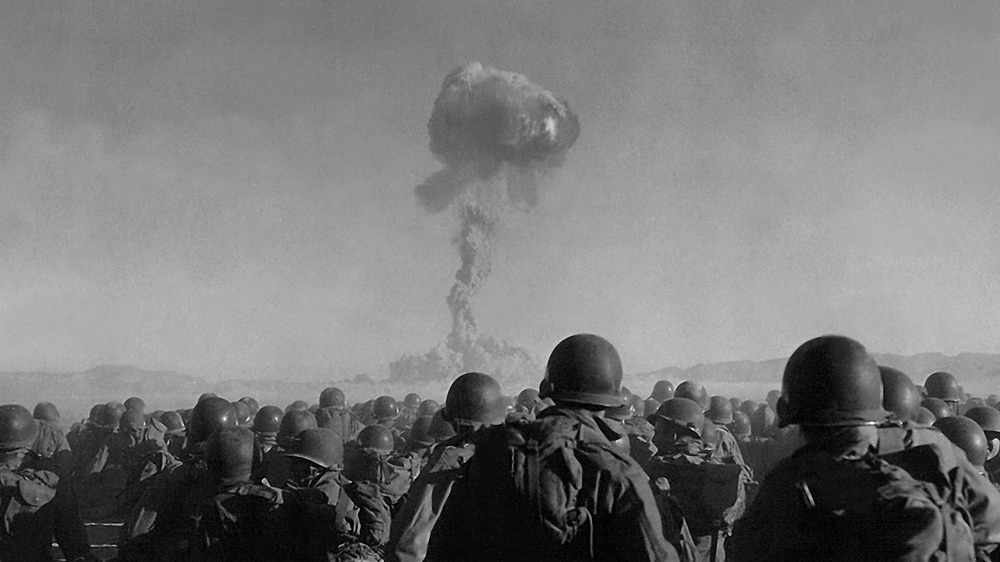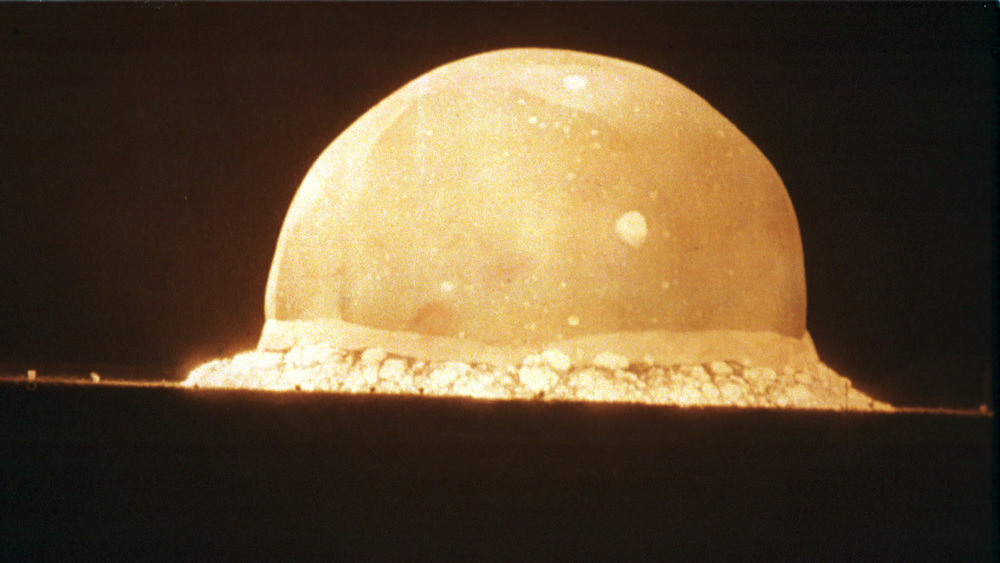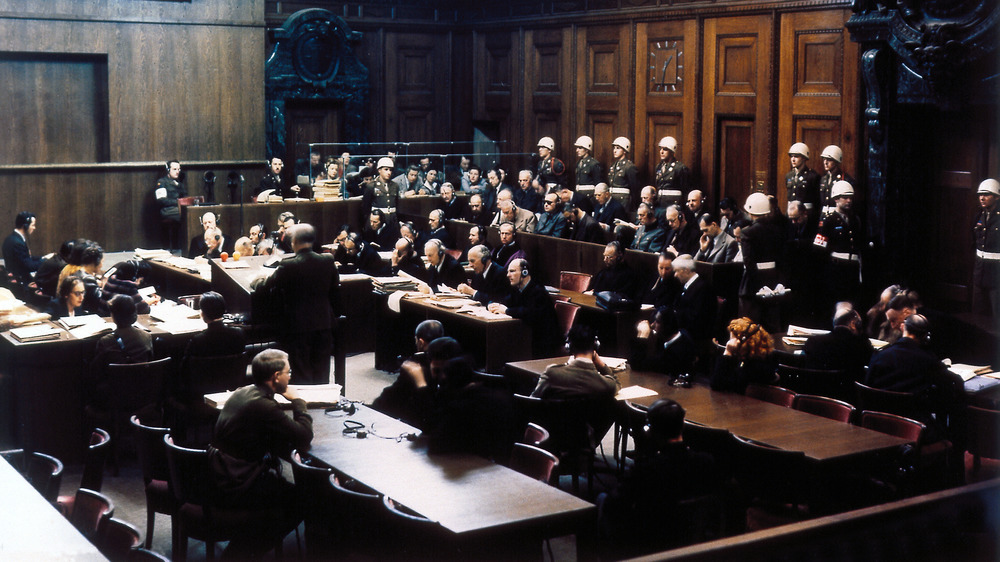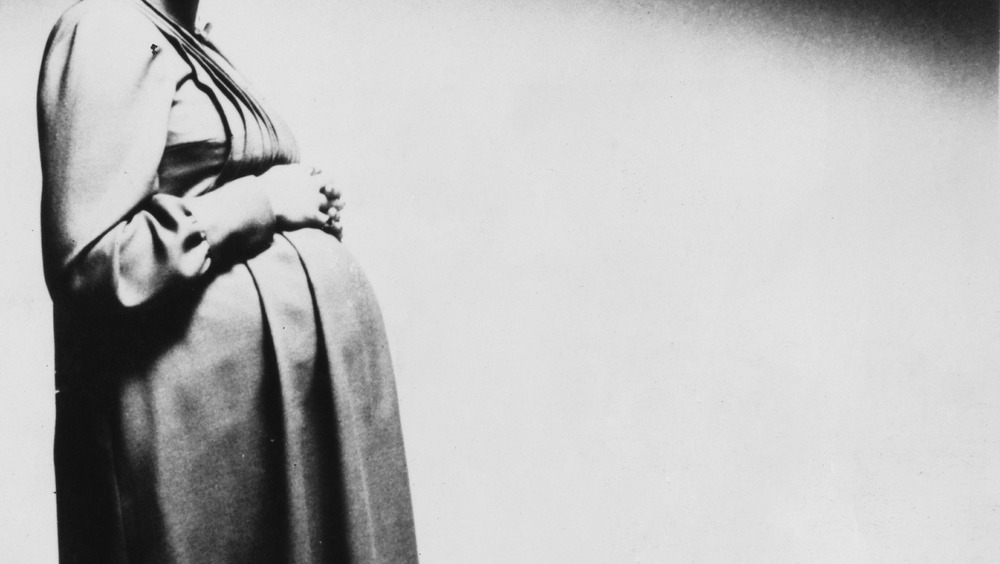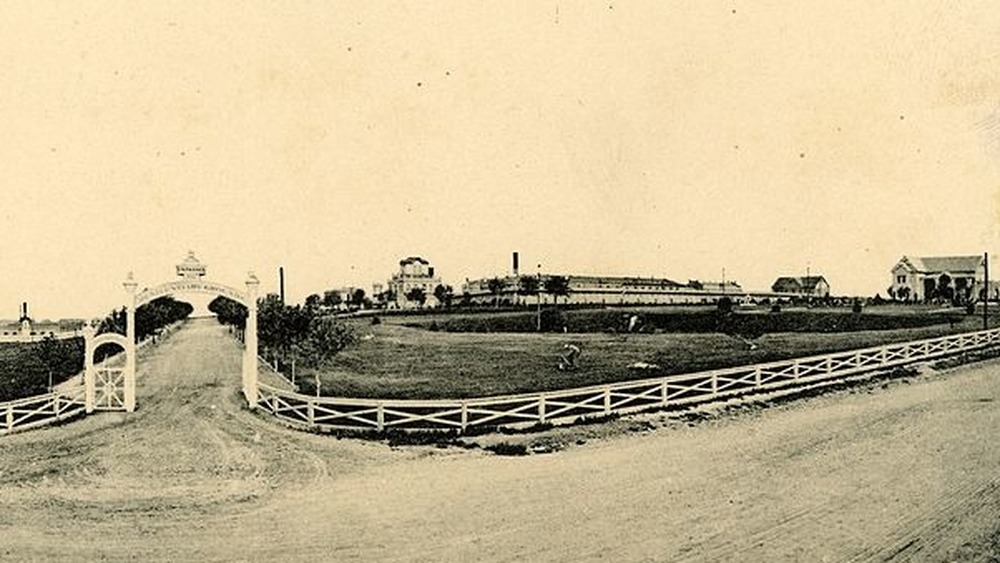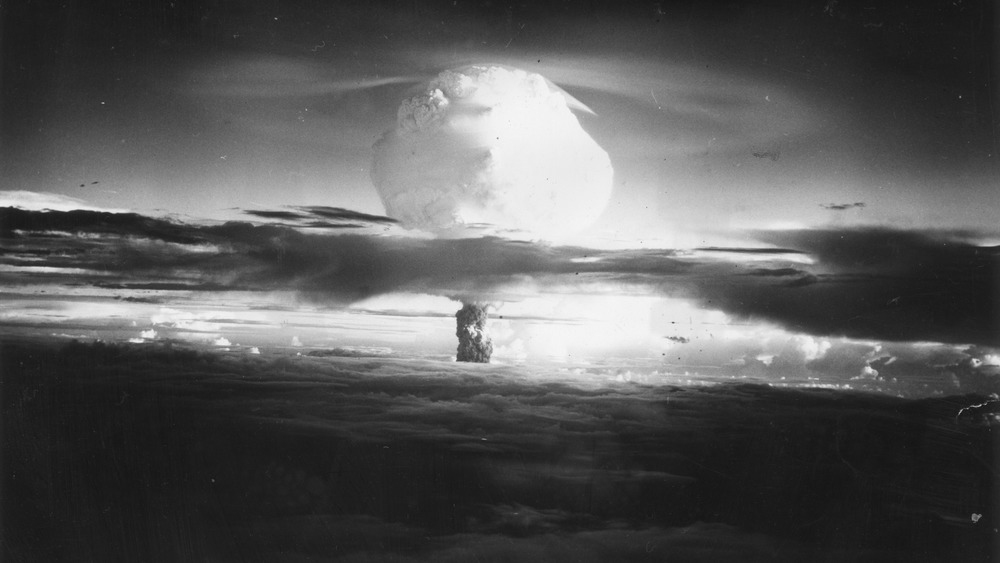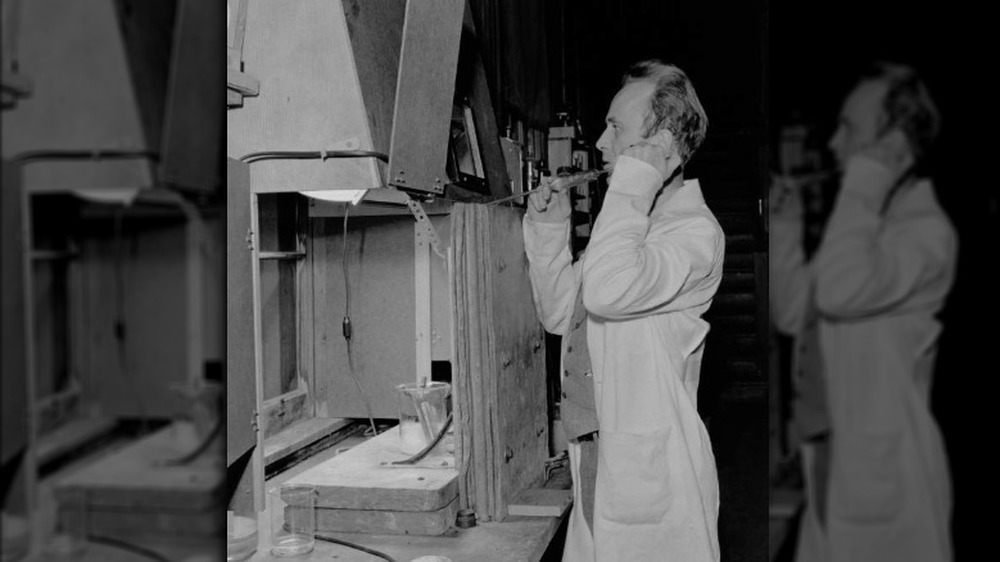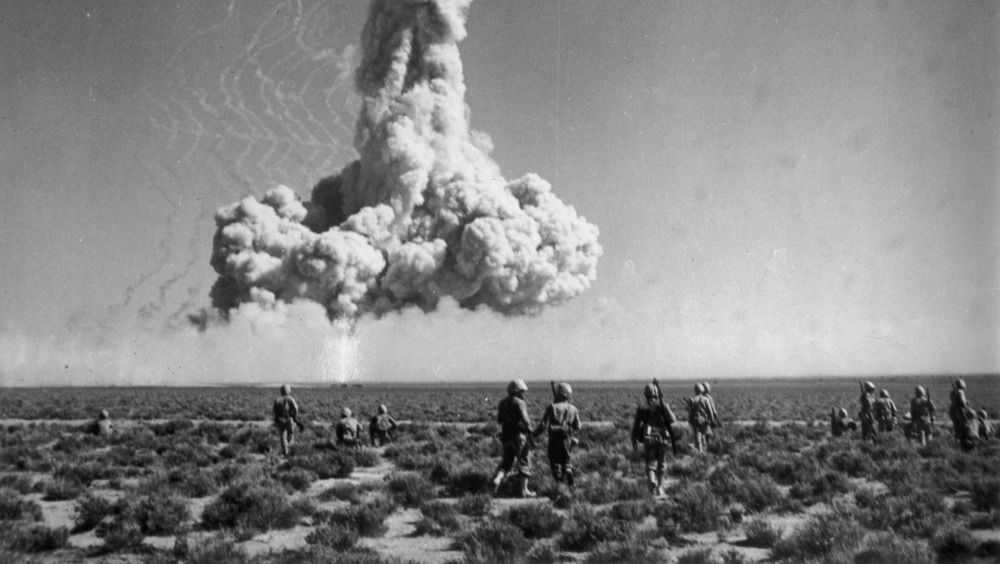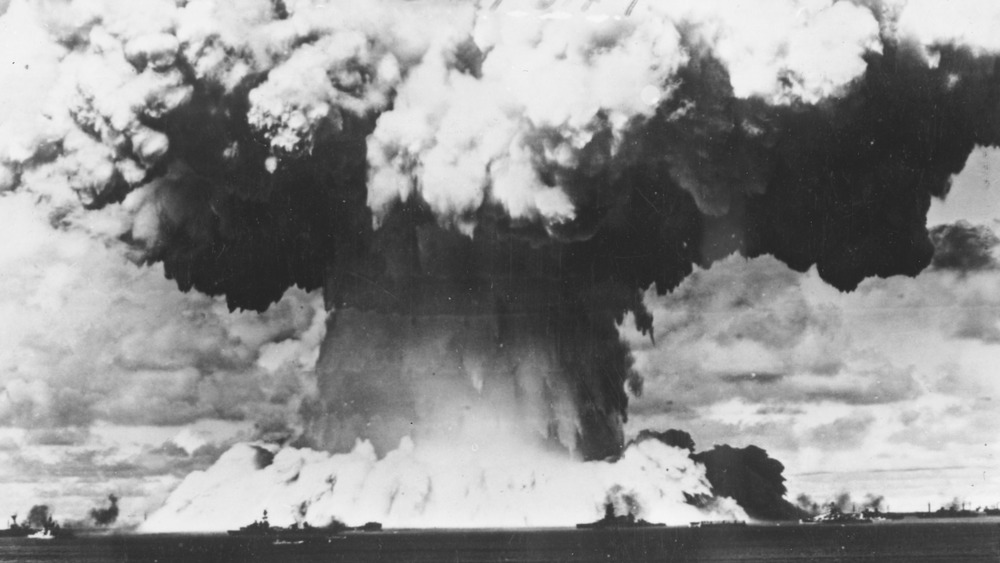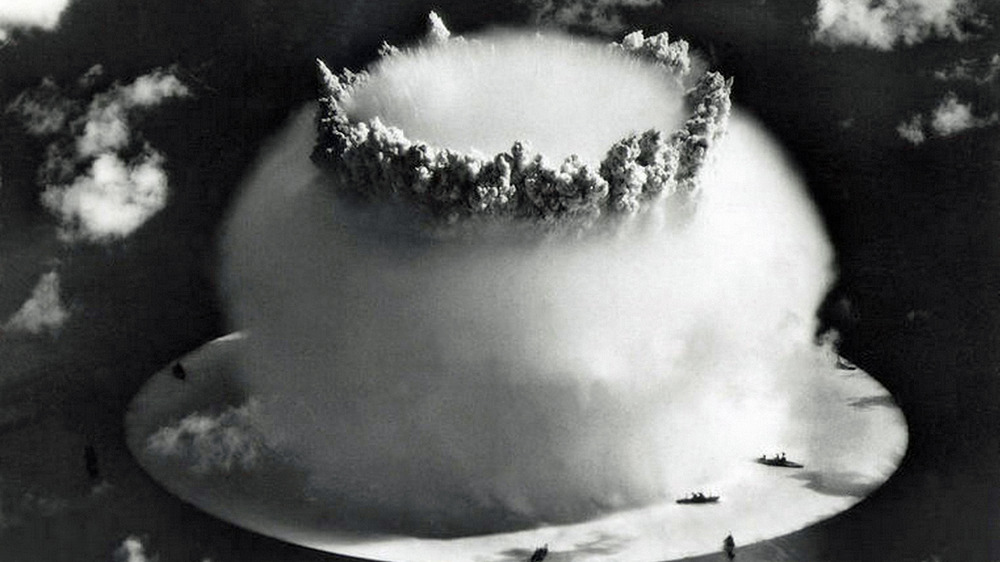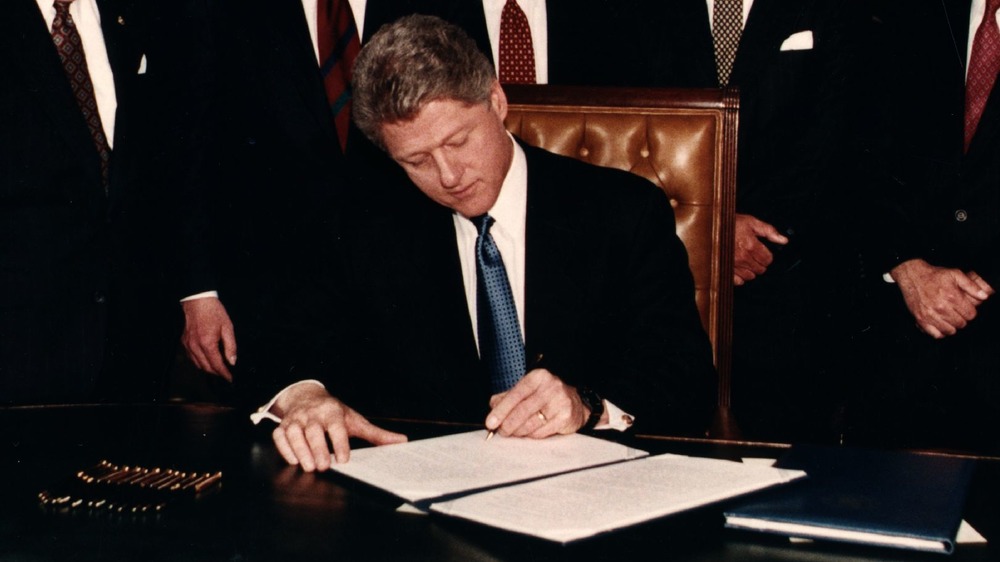The Crazy True Story Of Human Radiation Experiments In The United States
It's harrowing to think that almost everything that's known about radiation sickness was uncovered through unethical experiments on uninformed people, but there's little evidence to suggest otherwise. As it turns out, a lot of what the medical community has learned throughout history was found through exploiting uninformed people, especially those with mental disabilities.
Most of the researchers and scientists and government officials involved in radiation studies knew that they were doing something unethical, which is why they kept their work secret. Others, like Dr. Louis Lasagna, claimed "it wasn't that we were Nazis and said, 'If we ask for consent we lose our subjects,' it was just that we were so ethically insensitive that it never occurred to us that you ought to level with people that they were in an experiment."
The human radiation experiments lasted at least 30 years, and involved hundreds of thousands of civilians and American soldiers, and there's little-to-no documentation of any kind of informed consent. This is the crazy true story of human radiation experiments in the United States.
A post-war protocol
During World War II, scientists who were working on the Manhattan Project realized that they had to study the effects of radiation poisoning. The Health Division of the Manhattan Project was established in 1942, with Dr. Stafford Warren as the Chief Medical Officer, and was given three objectives: "to protect the health of Project workers, protect the public from any risks arising from the operation of the Project, and study radiation hazards in order to establish tolerance doses and devise methods of treatment," according to the Atomic Heritage Foundation.
Initially, radiation experiments were conducted on animals, but it was determined that the information gathered wasn't enough to create informed guidelines for people working with radiation. As a result, the Health Division of the Manhattan Project decided that "a controlled experiment on humans was necessary."
According to the Advisory Committee on Human Radiation Experiments (ACHRE), the first human radiation experiment was planned in 1944, and it wasn't until 1974 that "the Department of Health, Education, and Welfare adopted regulations governing the conduct of human research." All of these experiments were done without getting people's consent. In the few instances when patients did sign a consent form, the form didn't "fully explain the medical procedure or risks." These experiments involved both GIs and civilians and in 1947, the AEC recommended that human experimentation should be kept secret since "it might have an adverse effect on public opinion or result in legal suits."
The irony of the Nuremberg trials
After World War II, the Nuremberg trials indicted numerous Nazi bureaucrats and physicians, accusing them of war crimes. And according to "Ethically Impossible," one of the main witnesses for the prosecution was Dr. Andrew C. Ivy, a prominent U.S. medical researcher, who wrote a report articulating ethical standards for human experimentation. But concerningly, historians think "preparation of this report was prompted by the Nazis' defense lawyers' surprisingly disconcerting arguments regarding questionable conduct of human research in the United States, particularly research conducted in prisons."
This report was accepted by the American Medical Association in 1946 and was published in the Journal of the American Medical Association in January 1947. In these ethical standards, there was an emphasis on informed and voluntary consent, stating that "all subjects must have been volunteers in the absence of coercion in any form. Before volunteering the subjects have been informed of the hazards, if any," and that "the experiment must be conducted... so as to avoid all unnecessary physical and mental suffering and injury, and... there is no a priori reason to believe that death or disabling injury will occur, except in such experiments as those on Yellow Fever where the experimenters serve as subjects along with non-scientific personnel."
Although no one was convicted in the Nuremberg trials for violating medical ethics, by 1947, the concept of informed consent existed and was supposedly accepted in the medical community.
Radioactive oatmeal
One of the experiments approved by the Atomic Energy Commission was conducted at the Massachusetts Institute of Technology (MIT) between the late 1940s and early 1950s. Partnering with Quaker Oats, the experiments involved feedings boys from the Walter E. Fernald State School (pictured), once known as Experimental School for Teaching and Training Idiotic Children, oatmeal laced with radioactive elements.
The Fernald School housed children with mental disabilities, but they also took in children without any diagnosed disabilities who had no adult guardians. And according to the Smithsonian Magazine, over 70 boys from the Fernald School, aged 10 to 17, took part in experiments that involved eating "oatmeal and milk laced with radioactive iron and calcium." There was also at least one experiment that involved direct injections of radioactive calcium. At the time, the boys knew nothing of the experiments. They just thought that joining the Science Club at the Fernald School came with "perks," including free breakfast.
The Tech writes that in 1998, Quaker Oats Co. and MIT agreed on a $1.85 million settlement in a class action filed by former Fernald students who were experimented on without their consent. Although MIT acknowledged that "proper procedures for consent were not followed," they maintained that none of the experiments "involved a large enough dose of radiation to harm subjects."
Lying about supplements
In the 1940s, researchers at Vanderbilt University gave over 800 pregnant white women "tracer doses of radioactive iron." Researchers worked with the Tennessee State Department of Health on these experiments, and the final report of the ACHRC writes that research was "partly funded by the Public Health Service."
The women were given what they thought were "vitamin drinks" or pills, which exposed the women and their fetuses to the amount of radiation one gets from an X-ray, since they wanted to see how quickly radioisotopes moved into the placenta. There are indications that the pregnant women involved in the experiments "neither gave their consent nor were aware they were participating in an experiment." The Washington Post also reports that at least three children born to the women who were part of the experiments "likely died because of the tests," since all of their deaths were due to some form of cancer.
Unfortunately, according to the Chicago Tribune, "most of the original documents from the experiment have been lost or inadvertently destroyed." As a result, although there were at least 800 women who were given radioactive iron, partial records only exist for about 200 women who were unknowingly part of the experiment. In 1998, Vanderbilt University and the Rockefeller Foundation, which partly funded the study, agreed to a $10.3 million settlement in response to the class action lawsuit brought by the women who were experimented on without their consent.
'Reproductive radiation tests'
In an attempt to find out more about the effects of radiation on testicles, the Atomic Energy Commission exposed imprisoned people at Washington and Oregon prisons to radiation between 1963 and 1973. The Alliance for Human Research Protection writes that these experiments occurred simultaneously at Washington State Penitentiary and Oregon State Penitentiary.
At Washington State Penitentiary (pictured), between 64 and 131 imprisoned people were exposed to X-rays on their testicles by Dr. C. Alvin Paulsen. At Oregon State Penitentiary, at least 67 imprisoned people were experimented on by Dr. Carl Heller, unsurprisingly the former mentor of Dr. Paulsen. Dr. Heller's experiments were also sponsored by the Pacific Northwest Research Foundation of Seattle and funded by NASA, since they were interested in the effects of space radiation. In the span of 10 minutes, an imprisoned person would be exposed to the equivalent of 2,400 chest X-rays on their testicles. Apparently, "the inmates agreed to participate in the experiments having been lured with cash and the suggestion of parole."
According to the final report of the ACHRC, the imprisoned people were told nothing of the risk during the early years, and were given "perhaps a vague reference to the possibility of 'tumors' but not cancer" later on. After a number of the imprisoned people in Oregon suffered from testicular cysts and skin eruptions, a class action suit was filed in the 1970s. Although the people who were experimented on only got $2,000 each, "their case did help expose more details."
Project SUNSHINE
By 1949, the Atomic Energy Commission wanted to examine the effects of radioactive fallout. Project Gabriel was concerned with figuring out "how many atomic weapons could be detonated before radioactive contamination of air, water, and soil would have a long-range effect upon crops, animals, and humans," according to the final report of the ACHRC.
After determining "strontium 90 (Sr-90) was the most dangerous long-term, global radioactive product of bomb testing," a global study of its fallout was recommended. According to the New York Times, the study entailed collecting human tissue and bone "from cadavers without obtaining the permission of the next of kin." This study became known as Project SUNSHINE and it was "decided, for various reasons including public and international relations, to classify this project SECRET for the present. Hence, the unclassified description of our purpose in obtaining these bones is for Ra analysis."
Researchers were fully aware that what they were doing was unethical: it was determined that "human samples are of prime importance and if anybody knows how to do a good job of body snatching, they will really be serving their country," according to AEC commissioner Dr. Willard Libby. Taken from around the world, many of the stolen human remains were stillborn infants, writes The Washington Post.
Injections of plutonium
Between 1944 and 1947, patients at many Manhattan Project-affiliated hospitals were injected with various radioactive elements without their knowledge by the medical team of the Manhattan Project. Interesting Engineering writes that these experiments were conducted in hospitals across the United States and at least "18 subjects were injected with plutonium, six with uranium, five with polonium, and at least one with americium."
According to the Atomic Heritage Foundation, these experiments were done for a number of reasons. The plutonium injections were meant to figure out how urine and feces could be used to "estimate the amount of plutonium remaining in an exposed subject." Some of the uranium injections at the Strong Memorial Hospital in Rochester were intended to discern "the minimum dose that would produce detectable kidney damage."
Since none of the people injected with radioactive elements are alive today, it's impossible to know for certain if they gave consent in any way. However, as "The Human Plutonium Injection Experiments" explains, "one fact is almost certain—the patients were not told that they were being injected with plutonium." It's likely that the patients weren't even told that they were being injected with something radioactive. And tragically, "the doctors misdiagnosed many of their patients as terminal when they in fact were not."
Militarily necessary
In addition to the experiments on uninformed civilians, there were also chemical weapons testing and radiation testing on thousands of GIs. The PCRM writes that 60,000 GIs were used in chemical weapons experiments, at least 4,000 of whom were subjected to gas-chamber experiments that resulted in unconsciousness and painful blisters all over the body. Sometimes, GIs weren't given medical treatment afterwards and were "ordered to never speak about what [they] experienced under the threat of being tried for treason."
According to the final report of the ACHRC, the human radiation experiments on American soldiers varied from eating radioactive food to doing military exercises on contaminated land. And "available evidence suggests... that the Army did not treat HumRRO as a discretionary research activity but as an element of the training exercise in which soldiers were participating in the course of normal duty. The HumRRO subjects were apparently not volunteers."
Flash blindness experiments were also conducted in the 1950s, and the AEC knew that there was a possibility of permanent eye damage and sought a "release of AEC responsibility." It's unclear how many veterans and servicemen were used in these experiments, but during atmospheric tests alone at least 400,000 servicemen were exposed.
Detonations by the Marshall Islands
The United States also conducted numerous detonation tests in the Marshall Islands from 1946 to 1958. The detonation tests were known as Operations BRAVO, GREENHOUSE, IVY, SANDSTORM, and CROSSROADS. The LA Times reports that at least 67 nuclear bombs were detonated on Bikini and Enewetak atolls.
And these atolls weren't empty. According to the Atomic Heritage Foundation, in 1946, Navy Commodore Ben Wyatt had asked the Marshallese people to relocate so their atoll could be used "for the good of mankind." Despite the fact that the Marshallese didn't want to leave their homes, the U.S. military forced their evacuation in 1948. Residents were eventually brought back in 1969, but they were evacuated nine years late once it was discovered that the level of radiation was still "excessive."
Although U.S. authorities claimed to have cleaned Enewetak Atoll, it was later revealed that the United States had simply dumped the contaminated debris and soil into a crater now known to locals as "The Tomb," or Runit Dome. The United States also "dumped 130 tons of soil from an irradiated Nevada testing site" into Runit Dome. And despite the fact that the United States government has repeatedly been asked to help clean it up, "American officials have declined, saying the dome is on Marshallese land and therefore the responsibility of the Marshallese government."
Taking further advantage of exploitation
After exposing the Marshallese people to an absurd amount of unwanted radiation, the United States decided to double down on their unethical behavior and enrolled the people of Rongelap Atoll as human subjects into a secret project known as Project 4.1. The aim of the project was to study the effects of radiation on people over a long period of time, and the project was so secret that not even the test subjects knew that they were being studied for 30 years. "The team conducting the study did not ask the Marshallese for their consent or even explain to them that a study was being conducted," writes the Arms Control Association.
According to the final report of the ACHRC, the people of Rongelap believed that they were receiving medical care since they had been exposed to radioactive fallout due to changing winds during one of the United States' detonation tests. However, although some medical care was provided, mostly the people were just treated as guinea pigs.
The Marshallese weren't the only ones affected by the fallout. The Japanese fishing vessel Daigo Fukuryū Maru was 80 miles from Bikini Atoll when the bomb was detonated, and within days the crew members fell ill from radiation sickness. One crew member ended up dying less than a year after the detonation. During the 1980s, the United States set up a "$150 million compensation trust fund for those affected" by the radioactive experiments in the Marshall Islands.
Blatant and intentional disregard
Despite the fact that scientists were well-aware of the dangers of uranium, the Diné were recruited to work as uranium miners from the 1940s to the 1980s. According to "Navajo Uranium Workers and the Effects of Occupational Illnesses," disturbingly, "at no time during their employment were they informed of the dangers of radiation, nor were they informed of their rights under state workers' compensation laws when they became ill." Those who did know about the dangers of radiation were "told specifically not to inform the workers under [their] supervision that they were in danger."
The US Public Health Service (USPHS) was also aware of the harmful effects that radiation was having on the Diné workers' bodies because during the 1950s, they "regularly monitored the uranium miners in an epidemiological study to determine the health effects of radiation." However, the USPHS didn't tell the workers that their health was being monitored, or that they were getting ill because of radiation. They'd promised not to do so "in exchange for the mining company's list of miners' names." Because of this, it's clear that "the disregard for worker health and safety was blatant and intentional."
Cultural Survival writes that the Radiation Exposure Compensation Act (RECA) was meant to give financial compensation and an apology to Diné that had suffered from the effects of uranium, but for many of those affected, the financial compensation offered barely covered half of the medical procedures necessary for treatment.
Federal investigations into the human radiation experiments
Many of these human rights abuses came to light during federal committee investigations in the 1980s and 1990s. According to the Associated Press, in 1986, the report, "American Nuclear Guinea Pigs: Three Decades of Radiation Experiments on U.S. Citizens," was published, exposing some of the human radiation experiments conducted by the United States government. The report stated that the experiments were sponsored by "the Manhattan Project, the Atomic Energy Commission, and the Energy Research and Development Administration."
In 1993, journalist Eileen Welsome also reported on the government experiments, leading President Bill Clinton to create the Advisory Committee on Human Radiation Experiments, which published its final report in 1995. The report described hundreds of experiments where people were exposed to radioactive substances "without their express knowledge or full consent." These experiments were done on hundreds of people, including pregnant people and infants. Some people who'd been exploited in the experiments, like Albert Stevens, even had their remains "surreptitiously acquired by Argonne National Laboratory Center for Human Radiobiology and the National Human Radiobiology Tissue Repository" after they died.
According to the Atomic Heritage Foundation, "by 1997, laws were adopted to prohibit secret scientific testing on humans."
